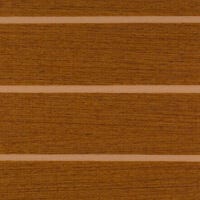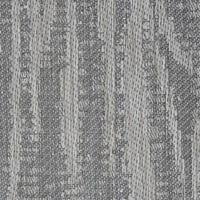Vinyl Flooring
Looking for a boat flooring option that’s tough, stain-resistant, and easy to clean up but still looks nice? Consider vinyl boat flooring, either sheet or woven, as an alternative to carpet, nonskid, or foam decking. » Read More
Learn More About Vinyl Flooring
Contents
Vinyl as Material for Boat Flooring & Decking
Vinyl has numerous qualities that make it a good material for boat flooring and decking. Vinyl is durable, slip-resistant, stain-resistant, and low-maintenance and can be made in virtually any color and pattern to match your boat’s style and color scheme. It’s less prone to soaking up water and dries more quickly than carpet, meaning it can be cleaned with a hose.
And it’s more resistant to cuts, scuffs, and gouges than EVA foam decking. Best of all, vinyl is relatively easy to install yourself, since it can be easily cut with a simple utility knife.
Types of Vinyl Marine Flooring
Vinyl marine flooring comes in two basic types: sheet vinyl flooring and woven vinyl flooring. Each has its unique characteristics, strengths, and weaknesses, but both are great choices for the right applications.
Sheet vinyl is just what it sounds like — a solid sheet of vinyl flooring typically sold by the linear foot in rolls six feet or eight feet wide. It is available in a huge variety of textures, colors, and patterns, ranging from very realistic faux wood to industrial-style diamond plate. Most sheet vinyl has no integrated padding so it’s not springy underfoot. Read More
UV Resistance in Vinyl Flooring
It’s important to keep in mind that not all vinyl boat flooring is meant for outside use, although much of it is. The SupremeVinyl woven flooring by North River that Boat Outfitters carries, for example, is UV-stable and suitable for use almost anywhere. It’s a favorite for pontoon and cruiser decks. Read More
Applications for Vinyl Boat Flooring
Vinyl marine flooring is used in several ways on recreational and commercial boats. Textured sheet vinyl floorings, like Loncoin, Loplate, and Lonridge, are commonly used in parts of boats that are subjected to frequent splashes and spills. Those include heads, engine rooms, bridges, ladders, passageways, and, on yachts, storage areas for tenders, PWCs, and dinghies. Read More
Installing Vinyl Boat Flooring
Unlike peel-and-stick foam decking products, vinyl flooring — both sheet and woven — must be installed with an adhesive. Lonseal, a manufacturer of sheet vinyl flooring, sells its own two-part epoxy adhesive and recommends applying it to the deck with a small U-notch trowel. For most vinyl flooring, several common flooring adhesives are recommended by the manufacturer. Read More
Vinyl Marine Flooring vs Carpet
Woven vinyl flooring and marine carpet are used in many of the same applications — pontoons, wake boats, cruisers, etc. — and have many similar qualities. They also have some key differences.
Both flooring types are cushioned and provide a pleasant feel underfoot, but carpet is generally the softer of the two. Carpet also tends to feel cooler with bare feet. Both flooring types are also generally UV-resistant, but the edge goes to vinyl here; carpet grades vary, but as a general rule, marine vinyl will last longer in the sun and weather. As for stain resistance, the edge also goes to vinyl. High-quality marine carpet is also stain-resistant, but vinyl is superior. Read More
Vinyl Marine Flooring vs Foam Decking
Both sheet vinyl flooring and woven vinyl can be used in some of the same applications as foam decking, commonly called EVA foam or SeaDek. One key difference is that not all vinyl marine flooring is UV-resistant. Some sheet vinyl products are designed for interior use only. All marine foam decking is UV-resistant. Read More



